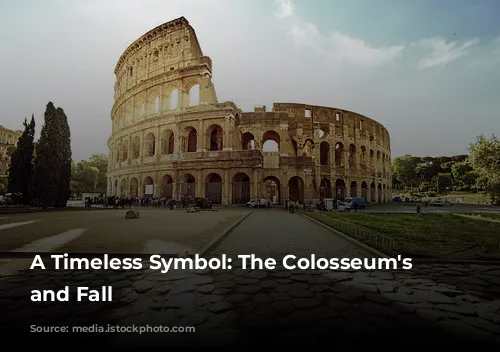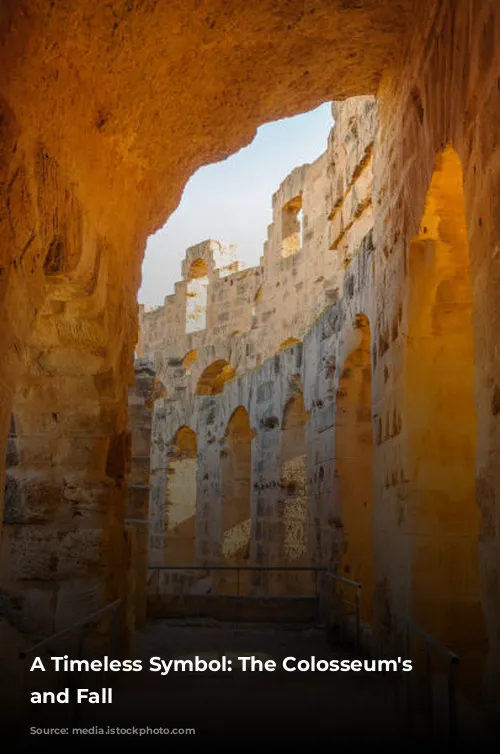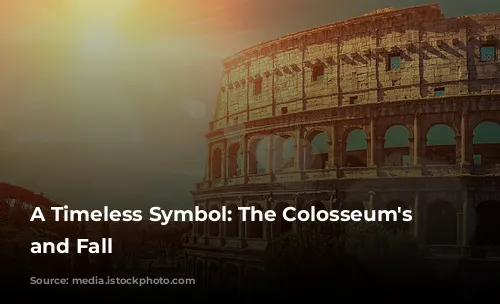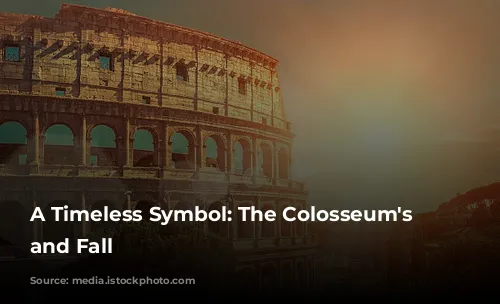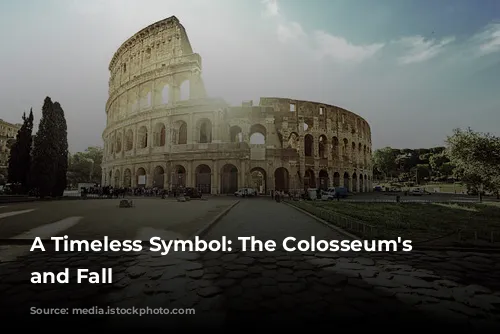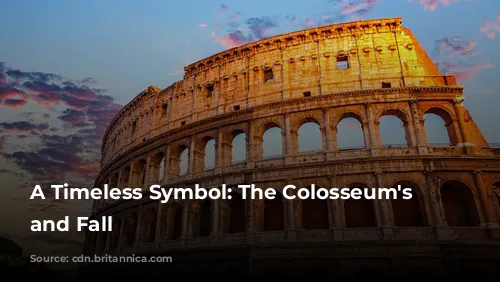The Colosseum, a majestic marvel of Roman architecture and engineering, stands as a powerful testament to the grandeur of the ancient Roman Empire. It’s not just a historical monument; it’s a thriving tourist attraction, bringing in substantial revenue for the Italian government. In 2018, the Colosseum, along with the Roman Forum and Palatine Hill, generated a whopping $63.3 million (€53.8 million), making it the most popular tourist destination in Italy. This remarkable feat speaks volumes about the enduring allure of this ancient wonder.
A Monument’s Journey Through Time
The Colosseum’s history is a captivating journey through centuries of change, from its initial glory to its subsequent decline and eventual restoration. Following the fall of the Western Roman Empire, the Colosseum fell into disrepair. In the 12th century, the Frangipane and Annibaldi families used the arena as their fortress, repurposing it for their own defense. The 15th century saw a further decline when Pope Alexander VI allowed the Colosseum to be used as a quarry, stripping it of its valuable materials. Over a thousand years of neglect left the Colosseum in a state of ruin, until state-funded restoration efforts began in the 1990s, breathing new life into this architectural gem.
A Stage for Spectacle and Brutality
The Colosseum was built as a grand spectacle, a centerpiece for entertainment during a turbulent era in Roman history, the tumultuous “Year of the Four Emperors” in 69 CE. Emperor Vespasian, seeking to revitalize Rome after a period of upheaval, envisioned the Colosseum as a place for public entertainment. This amphitheater was designed to host a variety of spectacles, including gladiatorial combats, thrilling animal hunts, and even elaborate mock naval battles, providing entertainment for tens of thousands of Romans.
From Humble Beginnings to Majestic Glory
Construction of the Colosseum commenced under Emperor Vespasian between 70 and 72 CE, and it was officially dedicated in 80 CE by his son and successor, Emperor Titus. The Colosseum’s final addition, the fourth story, was completed in 82 CE by Emperor Domitian. It is important to remember that the arena’s construction was financed by the spoils of war, specifically the plunder from Titus’s conquest of Jerusalem in 70 CE. Moreover, the labor force for this monumental project consisted of enslaved Jews from Judea.
A Structural Masterpiece
The Colosseum is an elliptical amphitheater made of stone, concrete, and tuff, rising to a height of four stories. It measures a staggering 620 by 513 feet (189 by 156 meters) and could accommodate as many as 50,000 spectators, making it a truly awe-inspiring spectacle of Roman ingenuity. This vast structure, renowned for its gladiatorial combats, stands as a testament to the architectural and engineering skills of the ancient Romans.
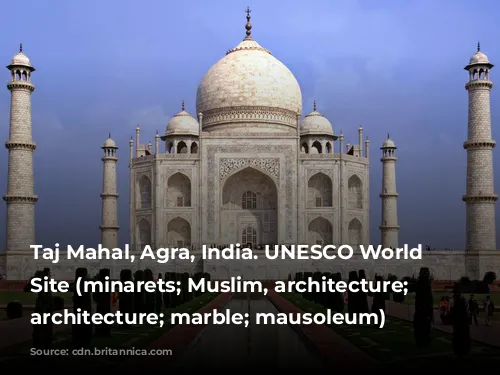
A Symbol of Power and Public Spectacle
The Colosseum’s construction was as much a symbolic gesture as it was a practical one. Emperor Vespasian, who had risen to power from humble beginnings, decided to replace the extravagant Golden House of Nero with a public amphitheater. This deliberate choice signaled a shift away from the tyrannical excesses of the past and towards a more inclusive vision of Rome. The Colosseum was not just an entertainment venue; it was a visible manifestation of Vespasian’s commitment to the Roman people.

An Architectural Triumph
Unlike previous amphitheaters, which were often carved into hillsides for extra support, the Colosseum is a remarkable freestanding structure. It was built using an innovative system of barrel vaults and groin vaults, and its exterior is adorned with three tiers of arcades framed by engaged columns in the Doric, Ionic, and Corinthian orders. This iconic architectural arrangement, known as the “assemblage of orders,” influenced Renaissance architecture. The main structural framework and facade of the Colosseum are crafted from travertine, while the secondary walls are constructed from volcanic tufa, and the inner bowl and arcade vaults are made of concrete.
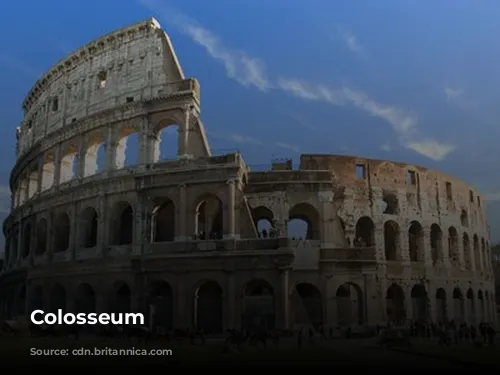
A Venue for Epic Spectacles
The Colosseum could accommodate up to 50,000 spectators, who were protected from the sun by a massive retractable awning known as the velarium. This ingenious system involved supporting masts extending from corbels in the Colosseum’s attic story, and it required the expertise of hundreds of Roman sailors to manipulate the rigging that extended and retracted the awning. The Colosseum was the scene of countless gladiatorial battles, contests between humans and animals, and even elaborate mock naval battles, showcasing the Roman people’s thirst for entertainment and spectacle. However, the authenticity of the Colosseum’s role in the martyrdom of early Christians remains uncertain.
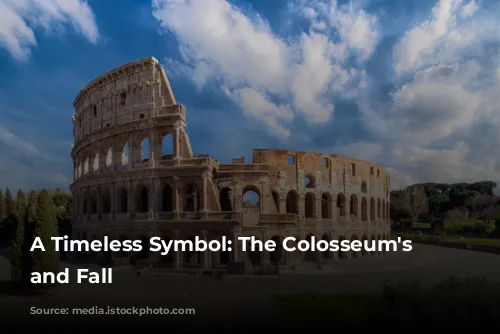
A Journey of Restoration and Rebirth
Over time, the Colosseum suffered from a combination of natural disasters, neglect, and vandalism. Lightning strikes, earthquakes, and the removal of its valuable marble seating and decorative elements by quarrymen for over a thousand years led to significant deterioration. However, preservation efforts began in earnest in the 19th century, led by Pope Pius VIII, and a major restoration project was launched in the 1990s. Today, the Colosseum stands as one of Rome’s most popular tourist attractions, welcoming nearly seven million visitors annually. Its grandeur and historical significance continue to captivate visitors from around the world, ensuring its enduring legacy as a symbol of Roman might and a testament to the enduring power of human ingenuity.
